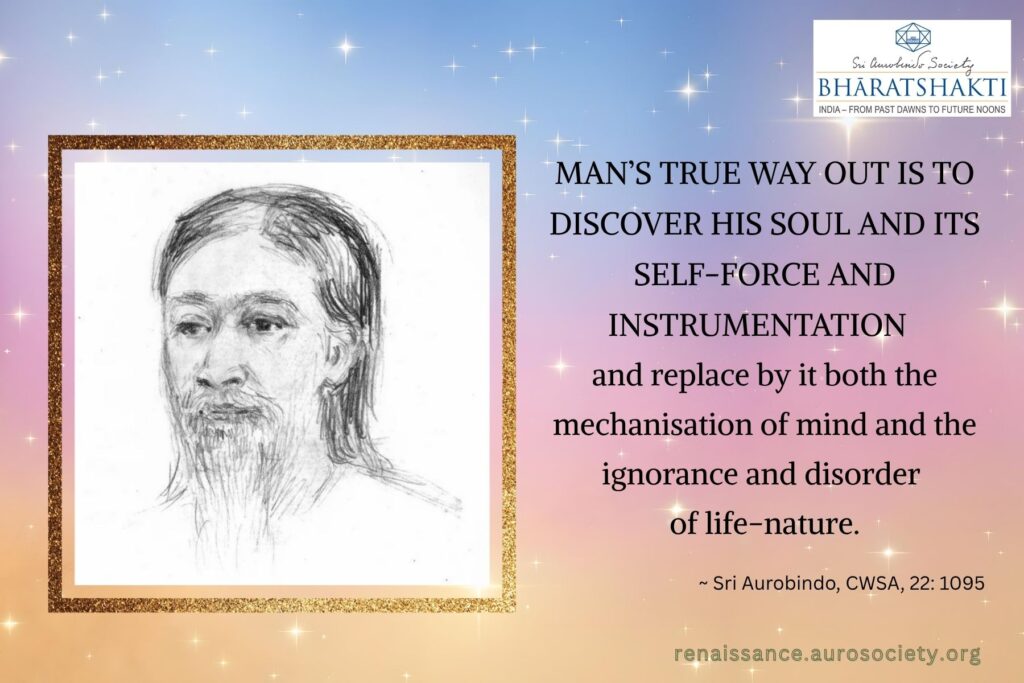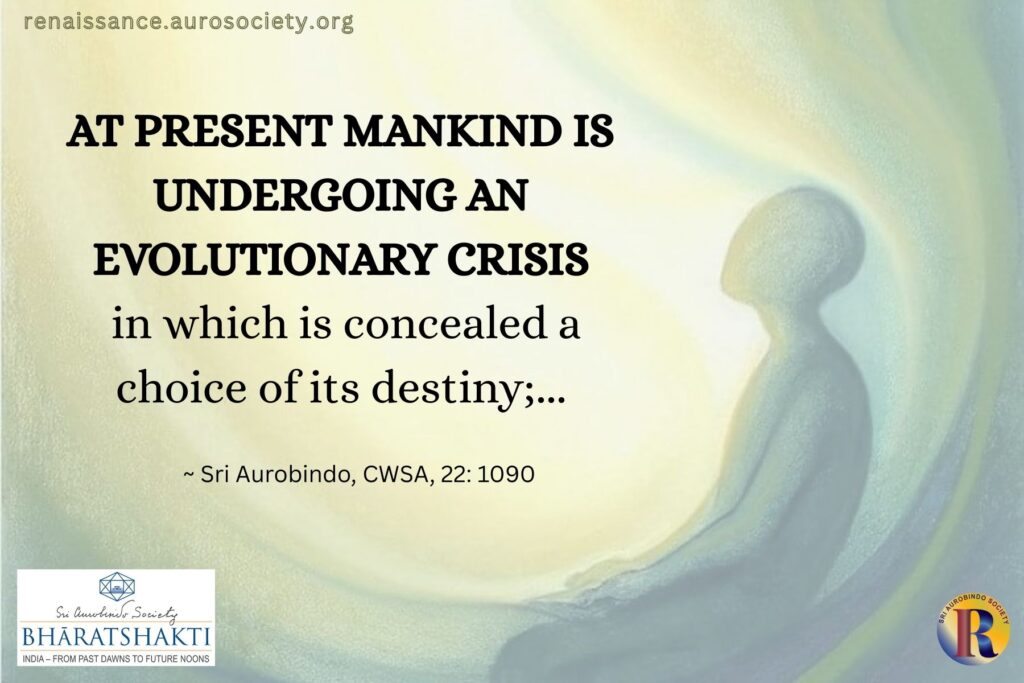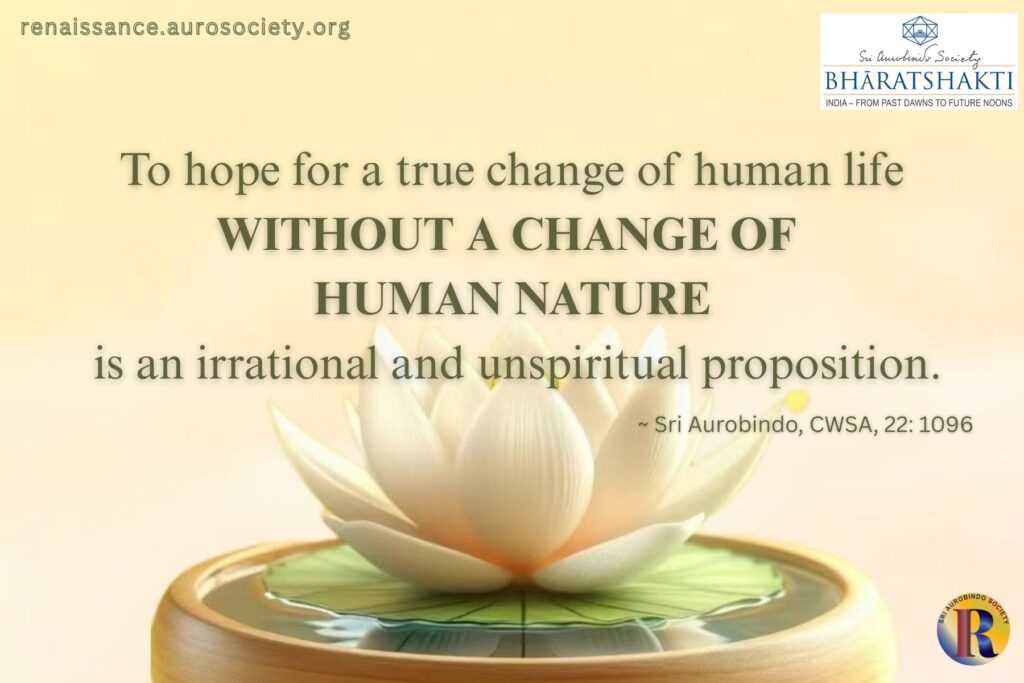Volume V, Issue 10
Author: M.P. Pandit
Editor’s Note: We feature two short essays by M.P. Pandit (Commentaries on the Mother’s Ministry, Vol. IV). In the first one, we learn of the various zones of what the Mother called as the World of Creation. This helps us understand the source of inspiration for various art forms.
I know it very well, I have been there frequently. It’s at the very summit of human consciousness, on the borderline between what Sri Aurobindo calls the lower and the higher hemispheres. It is very high, very high.
I have studied this realm extensively. It is a world of creation with several levels or degrees.
~ The Mother, Agenda, Vol. 3, pp 387-388
The second essay emphasises that art is way to help reveal and experience the subtler order of existence. And thus, art can be an important means for spiritual progress.

Creative World
The Mother speaks of a world of creation at the summit of human consciousness, on the border between the lower hemisphere and the higher. It is from there that the creative impulses proceed to actualise themselves on earth. This world, however, has many zones, and each zone has several levels.
The first zone as we rise into this world is of material form. It is here that typal forms in painting, sculpture, architecture take shape. They are the forms that inspire human vehicles on earth and express themselves, with whatever success.
The second zone is of music, but music without sound as we know it. Here are the origins of sounds that have inspired great musical compositions in our world here. In this realm is found the essence of sound. Higher up in this zone are waves of music in vibrations. Various combinations take place. Mother says that it is here that Consciousness finds its first expression as Joy.
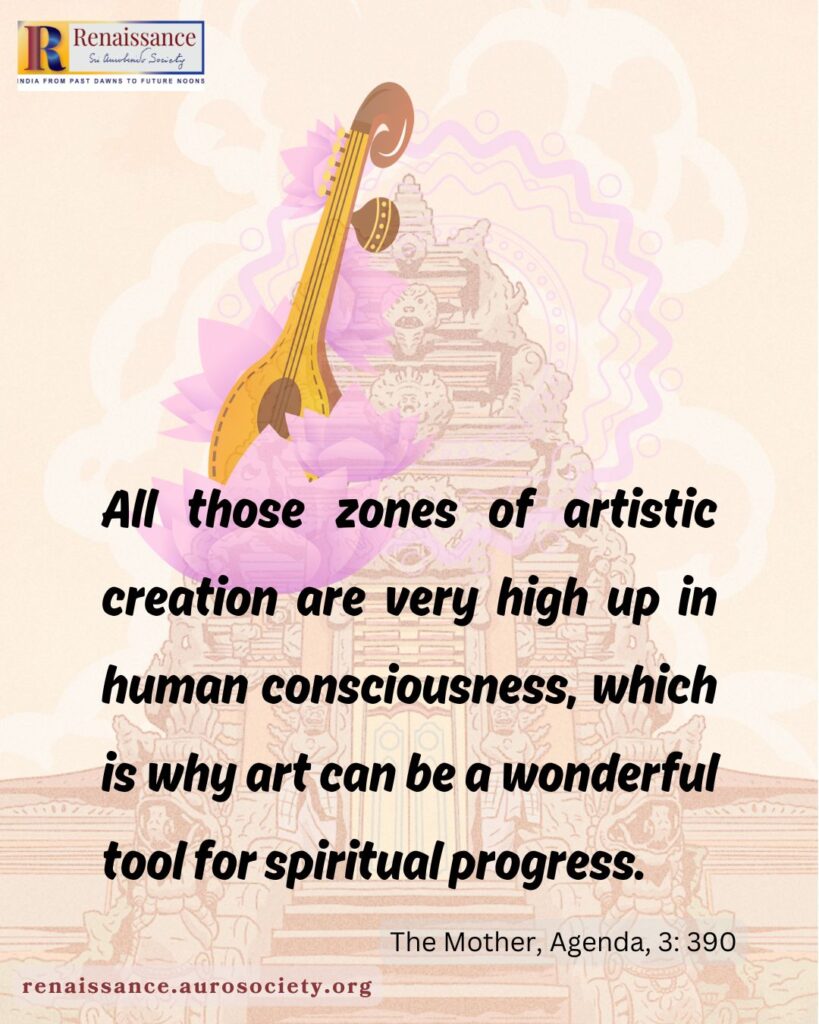
The third zone is of thought—pure thought in its combinations. These thought formations are naturally not couched in any language. They express themselves in the language of the person who receives them. These formations are at the origin of plots or themes in many books, novels, plays, philosophies, intellectual exercises. Those who want to influence the higher thinking on earth can, if they have the know-how, project the pure thought formations, the ideas in the earth-world.
Anyone who is open receives the transmission—which is of course, not in words—and he can express it in his own language. Such phenomena have indeed taken place quite often. The same idea or ideas have been presented by more than one individual, unknown to one another, in different languages, different cultures.
READ:
Purpose of Art – The View of an Artist and a Sadhu
Still higher, in the fourth zone, there is a play of forces in the form of coloured lights. And these colours and hues far surpass those we are familiar with on earth in their variety, depth and combinations. This is in fact the zone of action. The forces that are in movement here are really action powers. And when operated with knowledge they do produce results on earth. Pressure upon these forces—and their combinations—represented by coloured lights, brings about happenings in the terrestrial universe in the desired direction.
These are the four zones in this world of creation: Form, Sound, Thought, coloured lights representing Forces. Mother observes that one can go direct to this world from the vital without having to pass through the various tiers of the mind.
Art as a Means for Spiritual Progress
Commonly art is regarded as a luxury. It is supposed to be meant for those who have plenty of leisure. It is decorative in its utility, an accomplishment of culture at the most. And it has no relevance to spiritual life. In fact it is even looked upon as inimical to spiritual interests as art as an occupation is said to loosen the moral fibre of persons engaged in its pursuit.
But this is a very superficial approach. And perhaps, it may apply to things that pass for art but are not really that. The real function of art is not to imitate Nature. Neither is it to excite the senses. True art relates to the subtler order of existence. Whether it is painting, sculpture or music, art aims to bring out values and movements that are behind and beyond the physical exterior. It may be the intensity of feeling, pattern of the organisation or functioning of forces or sounds and their combinations that transcend the ordinary physical setup. In other words, art brings out the normally invisible play of emotions, sensations, ideas, and, at its best, the deeper soul-movements.
That is why art was given great importance in the ancient religions and spiritual movements. Outstanding contributions in the field of religion and spirituality are found recorded and preserved in the various expressions of art e.g. literature, paintings, sculpture, architecture, inspiring music. Even to appreciate this element in art needs a development of the finer faculties in man. Much more it is so in the case of those who produce art.
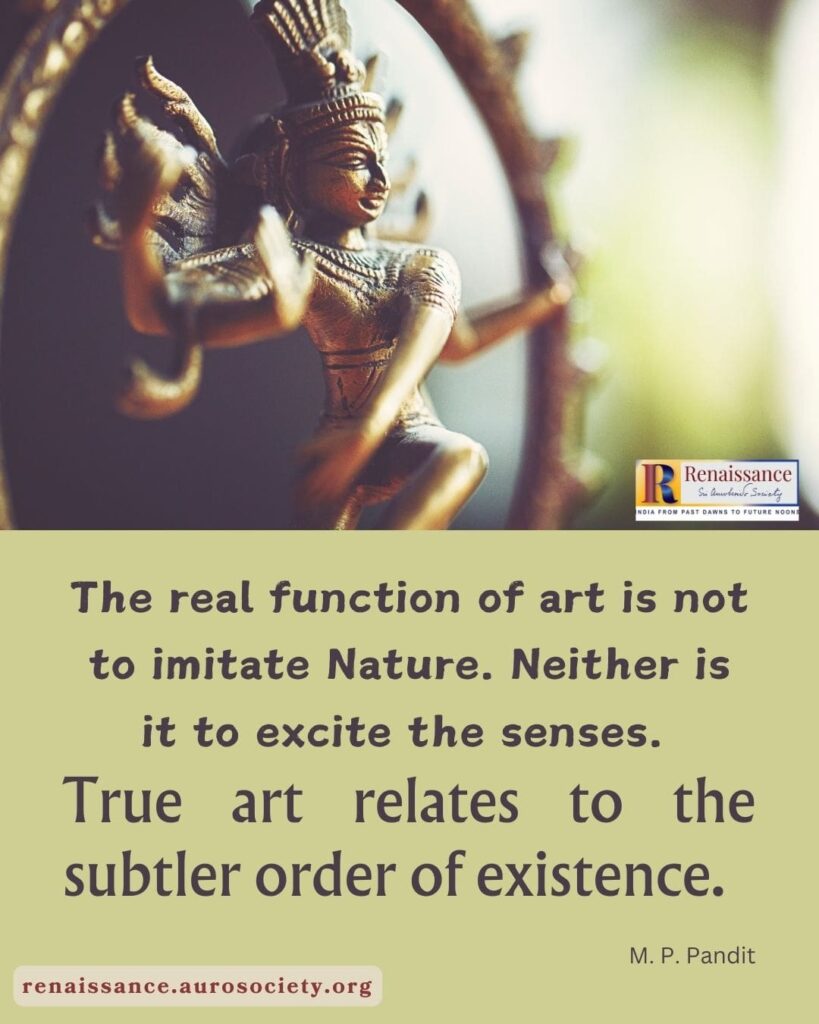
READ:
An Intuitive and Spiritual Eye to Appreciate Art
It is not enough to have adequate knowledge of the technique of execution in these matters. Of course that is necessary, but it plays a secondary role. What is more important is to be awake on the subtler levels of consciousness, receive the impulsions that arise from them, formulate them as faithfully as possible and then alone proceed to give them expression in whatever medium.
For those to whom art is not a pastime but an earnest way of life it is indispensable to live more and more on the deeper or higher levels of being. For all genuine movements in art originate in subtler regions, closer to the soul or the spirit. To reach them, to be open to them, to live there—at any rate in the best part of oneself— requires a strenuous discipline of orientation of consciousness. In the process the centre of reference gets shifted within or above the limited outer physical context.
It is thus that music, painting, poetry and similar pursuits promote spiritual progress.
The finer the quality of consciousness attained, the greater is the facility with which high inspirations communicate themselves to the human instrument. The real world of art is indeed high above the summits of human consciousness and to link oneself with it requires a sadhana of consciousness, yoga, though in rare cases there is a natural communion between the artist and the world of art. In such cases the homework has been usually done in earlier lives and the present one is a fruition of previous effort.
The effort is both positive and negative. To quieten and purify the gross, sensational being, to keep out vital mixture, to eliminate mental interference, is one part. The other is to stabilise and enlarge the opening to the subtler levels of consciousness, to receive the inspirations, revelations and other communications in a poise free from excitement and anticipations. It is a veritable sadhana.

~ Design: Beloo Mehra

